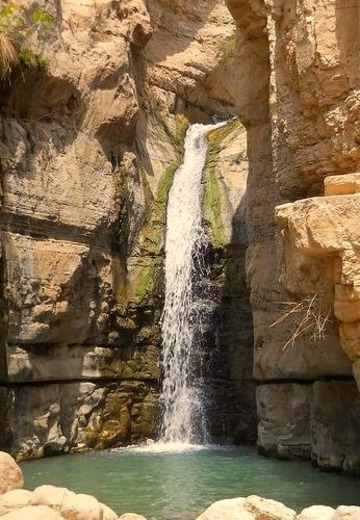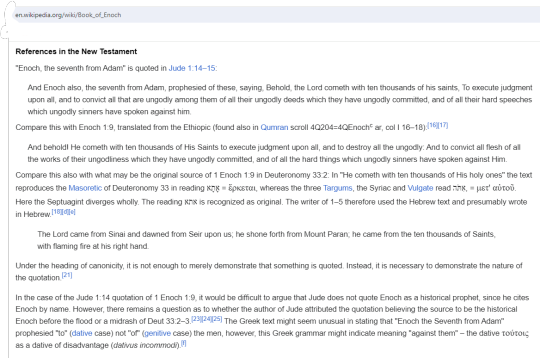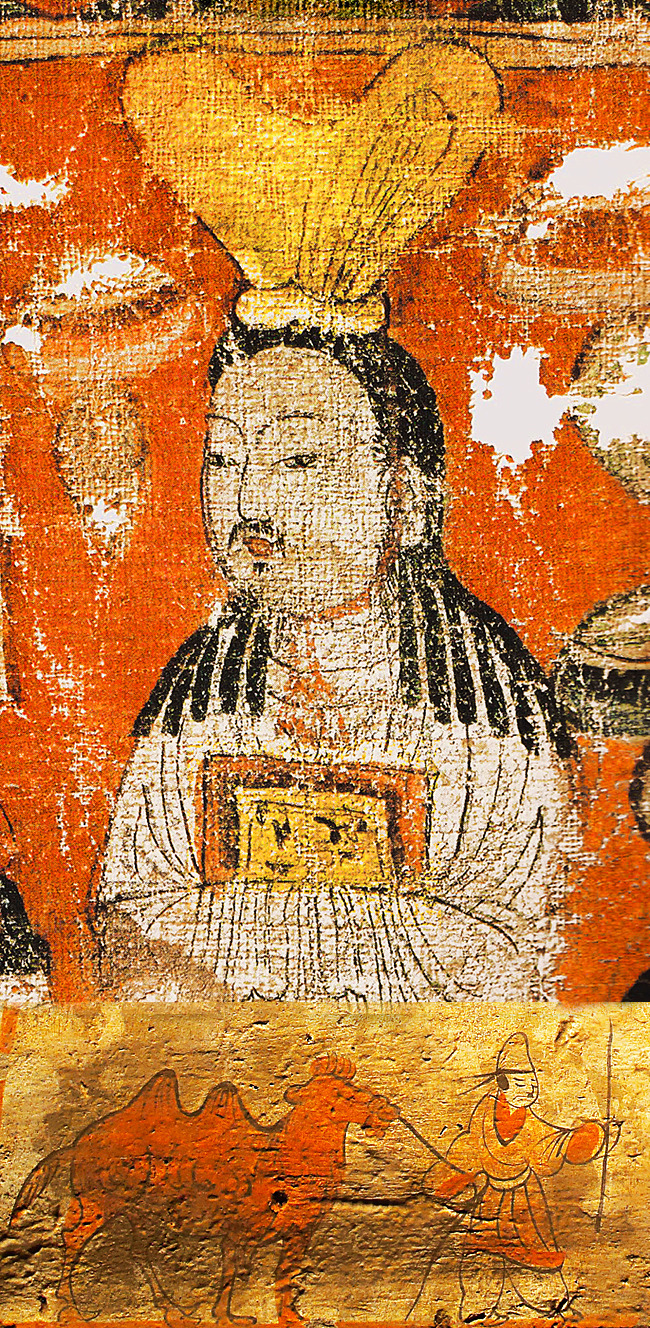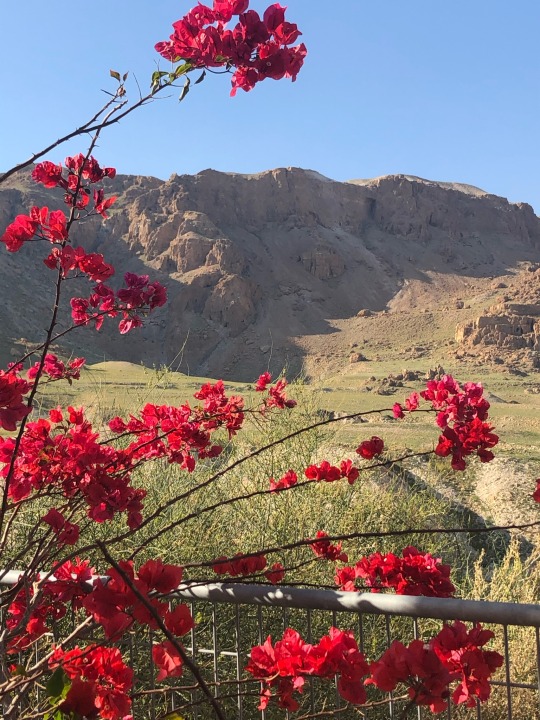#qumran
Text
Explore the perplexing disappearance of the Ark of the Covenant, a divine artifact mentioned in the Book of Exodus that vanished after the Babylonian destruction of Jerusalem.
38 notes
·
View notes
Text
Waterfalls in Ein Gedi Nature Reserve, Israel

2 notes
·
View notes
Text
From the Psalm-scroll of the Dead Sea Scrolls
My light shall shine forth in Thy glory.
For as a light from out of darkness,
so wilt Thou enlighten me.
Yet lo, on such a creature of clay
hast Thou shed Thy grace,
giving him Thy commandments
in Thy good will.
Thou hast shaped that clay on the Wheel
and passed it through Thy test,
that it may find its way
into Thy lot;
and when cracks appear in it,
Thou mendest them.
Yea, over mere dust
hast Thou wafted Thy Holy Spirit,
and hast so molded that clay
that it can have converse with angels
and be in communion
with beings celestial.
Mere flesh hast Thou lit
with a Light everlasting,
that there be no reversion to darkness,
and a Light hast Thou revealed
that it never can be turned back.
Your Holy Spirit
illuminates the dark places of the heart
of your servant,
with Light like the sun.
9 notes
·
View notes
Text
The Dead Sea Scrolls, first uncovered by a trio of Bedouin wandering the Judean Desert in 1947, provide a fascinating glimpse into what Scripture looked like during a transformative period of religious ferment in ancient Israel. The scrolls include the oldest copies ever found of the Hebrew Bible, “apocryphal” texts that were never canonized, and rules and guidelines for daily living written by the community of people who lived at Qumran, where the first scrolls were found. All told, scholars have identified as many as 100,000 Dead Sea Scrolls fragments, which come from more than 1,000 original manuscripts.
Experts date the scrolls between the third century B.C. and the first century A.D. (though Langlois believes several may be two centuries older). Some of them are relatively large: One copy of the Book of Isaiah, for example, is 24 feet long and contains a near-complete version of this prophetic text. Most, however, are much smaller—inscribed with a few lines, a few words, a few letters. Taken together, this amounts to hundreds of jigsaw puzzles whose thousands of pieces have been scattered over many different locations around the world.
In 2012, Langlois joined a group of scholars working to decipher close to 40 Dead Sea Scrolls fragments in the private collection of Martin Schøyen, a wealthy Norwegian businessman. Each day in Kristiansand, Norway, he and specialists from Israel, Norway and the Netherlands spent hours trying to determine which known manuscripts the fragments had come from. “It was like a game for me,” Langlois said. The scholars would project an image of a Schøyen fragment on the wall beside a photograph of a known scroll and compare them. “I’d say, ‘No, it’s a different scribe. Look at that lamed,’” Langlois recalled, using the word for the Hebrew letter L. Then they would skip forward to another known manuscript. “No,” Langlois would say. “It’s a different hand.”
Each morning, while out walking, the scholars discussed their work. And each day, according to Esti Eshel, an Israeli epigrapher also on the team, “They were killing another identification.” Returning to France, Langlois examined the fragments with computer-imaging techniques he had developed to isolate and reproduce each letter written on the fragments before beginning a detailed graphical analysis of the writing. And what he discovered was a series of flagrant oddities: A single sentence might contain styles of script from different centuries, or words and letters were squeezed and distorted to fit into the available space, suggesting the parchment was already fragmented when the scribe wrote on it. Langlois concluded that at least some of Schøyen’s fragments were modern forgeries. Reluctant to break the bad news, he waited a year before telling his colleagues. “We became convinced that Michael Langlois was right,” said Torleif Elgvin, the Norwegian scholar leading the effort.
After further study, the team ultimately determined that about half of Schøyen’s fragments were likely forgeries. In 2017, Langlois and the other Schøyen scholars published their initial findings in a journal called Dead Sea Discoveries. A few days later, they presented their conclusions at a meeting in Berlin of the Society of Biblical Literature. Flashing images of the Schøyen fragments on a screen, Langlois described the process by which he concluded the pieces were fakes. He quoted from his contemporaneous notes on the scribe’s “hesitant hand.” He pointed out inconsistencies in the fragments’ script.
And then he dropped the gauntlet: The Schøyen fragments were only the beginning. The previous year, he said, he’d seen photos of several Dead Sea Scrolls fragments in a book published by the Museum of the Bible, in Washington, D.C., a privately funded complex a few blocks from the U.S. Capitol. The museum was scheduled to open its doors in three months, and a centerpiece of its collection was a set of 16 Dead Sea Scrolls fragments whose writing, Langlois now said, looked unmistakably like the writing on the Schøyen fragments. “All of the fragments published there exhibited the same scribal features,” he told the scholars in attendance. “I’m sorry to say that all of the fragments published in this volume are forgeries. This is my opinion.”
The weight of the evidence presented that day by several members of the Schøyen team led to a re-evaluation of Dead Sea Scrolls in private collections all over the world. In 2018, Azusa Pacific University, a Christian college in Southern California that had purchased five scrolls in 2009, conceded that they were likely fakes, and it sued the dealer who had sold them. In 2020, the Southwestern Baptist Theological Seminary, in Fort Worth, Texas, announced that the six Dead Sea Scrolls it had purchased around the same time were also “likely fraudulent.”
The most stunning admission came from executives at the Museum of the Bible: They had hired an art-fraud investigator to examine the museum’s fragments using advanced imaging techniques and chemical and molecular analysis. In 2020, the museum announced that its prized collection of Dead Sea Scrolls was made up entirely of forgeries.
Langlois told me that he derives no pleasure from such discoveries. “My intention wasn’t to be an expert in forgeries, and I don’t love catching bad guys or something,” he told me. “But with forgeries, if you don’t pay attention, and you think they are authentic, then they become part of the data set you use to reconstruct the history of the Bible. The entire theory is then based on data that is false.” That’s why ferreting out biblical fakes is “paramount,” Langlois said. “Otherwise, everything we are going to do on the history of the Bible is corrupt.”
— How an Unorthodox Scholar Uses Technology to Expose Biblical Forgeries
#chanan tigay#michael langlois#how an unorthodox scholar uses technology to expose biblical forgeries#history#religion#christianity#judaism#languages#linguistics#translation#palaeography#museums#forgeries#bible#torah#dead sea scrolls#museum of the bible#west bank#judaean desert#qumran#martin schøyen#esti eshel#book of isaiah
3 notes
·
View notes
Text
15 Deuterocanonical Books of the Bible; 7-15 Apocrypha books of the King James Bible Were Deleted; Black Slave Bible, Dead Sea Scrolls
The Deuterocanonical Books of the Bible are books which are included in some version of the canonical Bible, but have been excluded at one time or another based on textual or doctrinal issues from the standard bible.
Of these books, Tobias, Judith, the Wisdom of Solomon, Baruch, and Maccabees, remain in the Catholic Bible. First Esdras, Second Esdras, Epistle of Jeremiah, Susanna, Bel and the…

View On WordPress
#Apocrypha#Apocrypha books#azariah#baruch#Bible#black slave bible#book of enoch#deleted#deletion#Deuterocanonical#esdras#Esther#excluded#jeremiah#judith#King James Bible#maccabees#manasseh#qumran#sirach#slave bible#Solomon#susanna#Tobit
0 notes
Text
youtube
The Dead Sea Scrolls are ancient jewish manuscripts from the Second Temple Period which were written by the Essences & discovered here at Qumran on the shores of the Dead Sea. They contain ancient copies of the Old Testament.
#WalktheBible#DeadSeaScrolls#DeadSea#Qumran#QumranCavesScrolls#IsraelMuseum#Essenes#TheEssenes#TimeofChrist#Israel#VisitIsrael#holyland#Archaeology#BibleArchaeology#BiblicalArchaeology#ChristianPilgrimage#ChristianTraveller#DiscoverIsrael#Jesus#History#AncientHistory#JesusWalkedHere#bibletravel#christiantravel#israelinstagram#israeltrip#instaisrael#DeadSeaSalt#OldTestament#shorts
1 note
·
View note
Text
#God#Christ#Jesus#Salvation through Christ#Sadducees#Pharisees#Essenes#qumran#dead see scrolls#destruction of second temple#sandhedrin#torah#talmud
1 note
·
View note
Link
#AllesausserMainstream#BodoSchiffmann#Boschimo#Boschimo-News#Christentum#HighNoon#KhirbetQumran#Qumran#SchriftrollenvomTotenMeer
0 notes
Text
Letters to My Palestinian Neighbo(u)r
More of my travels in The Land - inner and outer space. From Griffons to being wrong about being wrong.
I finished Yossi Klein Halevi’s book yesterday.
I was sitting in the shade, in my brother’s garden.
In Ra’anana.
This is within the original 1948 borders of Israel.
Tomorrow, we visit Qumran, site of the Dead Sea Scrolls and on Sunday, Jerusalem. We will cross the border from East to West.
Thank you, Yossi, for reaching out, for articulating your position and providing an explanation for…

View On WordPress
#1948#Amos Oz#Anu#Beit Ha Tfutsot#Gamla#Griffon Vulture#Israel#Josephys Flavius#Karl Popper#Letters to my Neighbor#Naqba#null hypothesis#Palestine#Peace Now#Qumran#The Jewish Wars#Yossi Klein Halevi
1 note
·
View note
Text

Dead Sea Scrolls
Clay pot from the caves at Qumran, with a copper scroll in the background.
#dead sea scrolls#israel#middle east#clay pot#ancient artifacts#ancient culture#qumran#desert#caves#holy land#promised land#biblical archaeology
1 note
·
View note
Text
Michael Kotsch: Neue Schriften aus biblischer Zeit
Die Schriftrollen von Qumran am Toten Meer gelten als eine der größten Sensationen der Archäologie des 20.Jahrhudnerts. Jetzt wurden in Israel erneut uralte Fragmente biblischer Schriften entdeckt, gar nicht weit von Qumran entfernt. In einer groß angelegten archäologischen Suchaktion durchkämmten Spezialisten alle Höhlen dieses Wüstengebiets. Dabei setzen sie auch auf moderne Technik,…
youtube
View On WordPress
#Bibel#biblische Archäologie#Christen#Glaube#Glimpses/Impulse#Gott#Heilige Schrift#Israel#Jesus Christus#neue Funde bestätigen das Alte Testament#Qumran#Wort Gottes#Zeit des frühen Christentums#Youtube
0 notes
Text
Blonde Milf Karen Fisher Gets Major Fucked By BBC Rome Major
Inked ts beauty facialized after anal
Recebendo visita do Twitter
Sweetheart Kenna helps Brandi Love Relieve Tension
Fit Porn Legend Inari Vachs Poses and Works Out
Maria Pie and Rossy Bush Watch Themselves Fucking in The Mirror
Boy small cock fucking video gay Sleepy Movie Night
tamil telugu aunty kannada aunty malayalam aunty Kerala aunty hindi bhabhi horny desi north indian south indian horny vanitha school teacher showing boobs and shaved pussy press hard boobs press masturbation using bottle
Hoodchick giving head
Big ebony booty reverse cowgirl
#backtracker#daylights#nondispensible#larklike#cardiograms#shoulder-piece#'midst#umpteen#finish-stock#pseudolegality#folkfree#mirabilite#satyashodak#wolfs#Qumran#mesdemoiselles#Belostomidae#merry#compulsative#scabriusculose
0 notes
Text
"Behold, my heart was amazed that thus the Word was revealed to one with ears unattuned, and that a wayward heart was able to grasp these things." (Psalm Scroll, The Dead Sea Scriptures, translated by T.H. Gaster)
4 notes
·
View notes
Text
L’âme double et ses intrications
“Mani”.
Le prophète persan Mani affirma qu’il était le « sceau des prophètes », cinq siècles avant le prophète Muḥammad, qui reprit l’idée. Mani voulut fonder un nouveau syncrétisme, un mélange de zoroastrisme et de bouddhisme hellénisé. Le manichéisme eut son heure de gloire, et les idées manichéennes se répandirent jusqu’en Chine. Saint Augustin, qui fut manichéen pendant un temps, témoigna de…

View On WordPress
0 notes
Text
youtube
Title: Who Wrote the Dead Sea Scrolls?
Channel: ReligionForBreakfast (Dr. Andrew Henry)
Length: 6:13
First of the Dead Sea Scrolls were found in the 1940's by Bedouin shepherds; some are complete documents, some are tiny scraps. We do not knew who wrote them; but they likely lived in Qumran, which was inhabited between 100 BC & 68 AD. The form of Hebrew script used in the Scrolls suggests the author was taught between 225 BC & 50 AD.
40% of Scrolls are from canonical Bible, some are Second Temple writings, 30% are sectarian writings. The sectarian writings suggest a very strict religious community that emphasizes ritual purity and communal eating. Qumran shows archaeological evidence for a community following such practices. Pliny the Elder describes as group called "the Essenes" who lived in this area, and describes them similar to the above.
The idea that the Scrolls were written by the Essenes is called the Essenes Hypothesis; it cannot be proven, but it is the leading explanation.
0 notes
